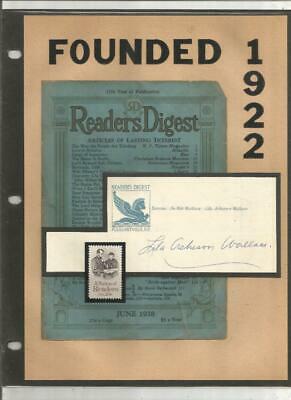-40%
00 State of Louisiana Gold Bond – Gov. John M. Parker Signature
$ 55.44
- Description
- Size Guide
Description
The central vignette of this attractive bond features an American Bald Eagle with outstretched wings, standing upon a rock, preparing to take flight. Flanking this are two decorative medallions with dollar signs, atop which is the denomination, expressed as“1000.”
. Immediately below the eagle, presented in bold lettering is
“STATE OF LOUISIANA”
, with
“UNITED STATES OF AMERICA”
above and
“REGISTERED SERIAL GOLD BOND”
below. The financial obligation states that
“The State of Louisiana is justly indebted and for value received hereby promises to pay to
Albert Sander
, or registered assigns, on the first day of August, 1956 the sum of
One Thousand
Dollars, with interest thereon at the rate of four and one-half per cent (4½%) per annum, payable on the first days of February and August of each year … Both principal and interest hereof are payable in gold coin of the United States of the present standard of weight and fineness …”
. It further states that
“… This bond is issued under the authority of and in full compliance with Article 324 of the Constitution of Louisiana adopted in 1913, in exchange for a like amount of Serial Gold Bonds of the State of Louisiana dated January 1, 1914 …”
. This bond was signed and sealed
“… at Baton Rouge, this
twentieth
day of
February
, 19
22
”
, with the signatures of
“Paul Capdevielle”
as
“Auditor”
,
“James J. Bailey”
as
“Secretary of State”
,
“Howell Morgan”
as
“Treasurer”
, and
“Jno M Parker”
as
“Governor”
added below. A dark green decorative border encloses all of the aforementioned material. The bond was printed by the
“FRANKLIN-LEE BANK NOTE COMPANY”
, with their imprint appearing in small letters at the lower center. The back features a short recapitulation of the financial information, as well as numerous lines for transactions, one of which is filled in. An additional section states that
“This bond is issued in exchange for a like amount of
fully registered
bond, numbered
45,
which had been issued in exchange for #M6281
”
, followed by the signature of
“Howell Morgan”
as
“Treasurer”
. This attractive bond would make a great addition to any state or governmental bond collection, or an interesting item to frame with a picture of the governor. It is interesting to note that the United States went off the gold standard about 10 years after the issuance of this piece, thereby making the gold payment clause on this document void.
John Milliken Parker was born in Bethel Church, Jefferson County, Mississippi, on March 16, 1863, the son of a Confederate soldier (one source states that he was born in Washington, a small town in St. Landry Parish, Louisiana). The family moved to New Orleans in 1871, where, at the age of seventeen, Parker left high school to work for a local business. In 1884 he entered the wholesale grocery business as a member of Parker-Haynes and Company. In the early 1890’s, Parker established the firm of John M. Parker & Company, cotton factors, in New Orleans. He served as president of the New Orleans Board of Trade in 1893 and as president of the New Orleans Cotton Exchange from 1898 through 1900. He became active in politics in the early 1900’s as a member of the Progressive Party, securing that party’s nomination for the vice-presidency in 1916, campaigning with his friend, Theodore Roosevelt. The party folded before the election. During World War I, Parker served as Food Administrator for Louisiana, and in 1918, he was appointed arbitrator in the strike of New Orleans metal workers. Following the war, Parker was elected governor of Louisiana, serving from 1920 through 1924. Three years later, in 1927, as the Mississippi River overflowed its banks, Parker was placed in supreme command of the flood emergency. John M. Parker died on May 20, 1939 in Pass Christian, Mississippi, and was buried in Metairie Cemetery in New Orleans.
The presently offered specimen exhibits the standard folds expected of a piece of this type, with three vertical folds equally dividing the bond. Each of the signatures is affected by these folds, with the Parker signature folded at the start of his last name. The folds have weakened the paper slightly, though paper separations are noted only at the top and bottom edges. Soiling is noted on the fold lines on the back, readily apparent since the folds are between the designs on the back. Light t
oning is present across the entire surface, a shade darker at the edges. Twelve punch cancellation holes are scattered throughout the document, mostly centered in the lower portion (interestingly, only one of the signatures is affected). Measuring approximately 9.45 x 13.90 inches, this historic piece would look great on a wall in a den or office.
A .95 charge will be added for postage and insurance.
If you have any questions regarding this item, please ask before purchasing.










